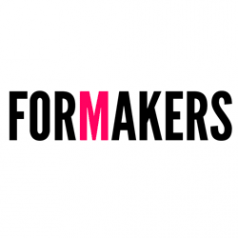04FEB 2013
 ©
©
 © The green roof is designed to be experienced from several vantage points: from above—walking amidst a dense landscape of indigenous vegetation intertwined with protuberant forms that emit water, air or light; from below—as a underside of the roof pulls down to close proximity with the floor; or from within—in the interior of the auditorium space and specialized laboratory areas designed for the cultivation of vegetation in semi climatically-controlled microclimates.
© The green roof is designed to be experienced from several vantage points: from above—walking amidst a dense landscape of indigenous vegetation intertwined with protuberant forms that emit water, air or light; from below—as a underside of the roof pulls down to close proximity with the floor; or from within—in the interior of the auditorium space and specialized laboratory areas designed for the cultivation of vegetation in semi climatically-controlled microclimates.
 ©
The Hydrophile derives its name in part from the hydrodynamic properties found in the shell of the Namib Desert beetle.
©
The Hydrophile derives its name in part from the hydrodynamic properties found in the shell of the Namib Desert beetle.
 ©
©
 © A coalescence between formal and material performance occurs at a micro scale in the shell of the beetle where hydrophilic—water attracting—and hydrophobic—water repelling—regions are interspersed to collect and direct the flow of water.
© A coalescence between formal and material performance occurs at a micro scale in the shell of the beetle where hydrophilic—water attracting—and hydrophobic—water repelling—regions are interspersed to collect and direct the flow of water.
 © In the Hydrophile prototype, this principle is applied on an architectural scale for the design of a hydrodynamic green roof system.
© In the Hydrophile prototype, this principle is applied on an architectural scale for the design of a hydrodynamic green roof system.
 ©
©
 © The primary performative aspect of the Hydrophile is the cultivation of biotopes on and through a variegated roofscape augmented with systems for percolating water through soil substrates.
© The primary performative aspect of the Hydrophile is the cultivation of biotopes on and through a variegated roofscape augmented with systems for percolating water through soil substrates.
 ©
©
 © The material properties of ceramics with varying degrees of porosity and surface treatments are coupled with a morphology of protuberant forms in order to perform as hydrophilic and hydrophobic agents.
© The material properties of ceramics with varying degrees of porosity and surface treatments are coupled with a morphology of protuberant forms in order to perform as hydrophilic and hydrophobic agents.
 © The protuberant morphology of the roofscape directs the flow of water to irrigate organic matter—dirt.
© The protuberant morphology of the roofscape directs the flow of water to irrigate organic matter—dirt.
 ©
©
 © The main driving factors for the design of the Hydrophile building and its plant communities are the substrate thicknesses, substrate design, and the roof topography and geometry.
© The main driving factors for the design of the Hydrophile building and its plant communities are the substrate thicknesses, substrate design, and the roof topography and geometry.
 ©
©
 © The roof topography is used to direct water to depressions where large amounts can be stored to support wet meadows or fens.
© The roof topography is used to direct water to depressions where large amounts can be stored to support wet meadows or fens.
 © Substrate thickness is used to create vegetational gradients ranging from shrublands and meadows on thicker substrates, to dry meadows and heathland on thin substrate layers.
© Substrate thickness is used to create vegetational gradients ranging from shrublands and meadows on thicker substrates, to dry meadows and heathland on thin substrate layers.
 ©
©
 © The roofscape is incorporated into a system of urban green surfaces that provide important links for the migration of species, possibly supporting existing biotope structures and habitat networks and promoting biodiversity in the local environment.
© The roofscape is incorporated into a system of urban green surfaces that provide important links for the migration of species, possibly supporting existing biotope structures and habitat networks and promoting biodiversity in the local environment.
 © .
© .
 ©
©
 ©
©
 ©
©
 ©
©
 ©
©
 ©
©
 ©
©
 ©
©
 ©
©
 ©
©
 ©
©
 ©
©
 ©
©
 ©
©
 ©
©
 ©
©
 ©
©
 ©
©
 ©
©
 ©
©
 ©
©
 ©
©
 ©
©
Hydrophile: Hydrodynamic Green Roof / servo stockholm + servo LA
Posted in Architecture - Landscape by * FORMAKERS | Tags: Servo stockholm, Servo LA, Sweden
This speculative proposal for a 8,000 sqm bioscience innovation center with a hydrodynamic vegetated roof, located in the Albano region of Stockholm, reconsiders the extensive green roof typology to produce an occupiable roofscape characterized by immersive depth. ©
©  ©
©  ©
©  ©
©  ©
©  ©
©  ©
©  ©
©  ©
©  ©
©  ©
©  ©
©  ©
©  ©
©  ©
©  ©
©  ©
©  ©
©  ©
©  ©
©  ©
©  ©
©
 ©
©
 ©
©
 ©
©
 ©
©
 ©
©
 ©
©
 ©
©
 ©
©
 ©
©
 ©
©
 ©
©
 ©
©
 ©
©
 ©
©
 ©
©
 ©
©
 ©
©
 ©
©
 ©
©
 ©
©
Comments
No comments
Sign in »



